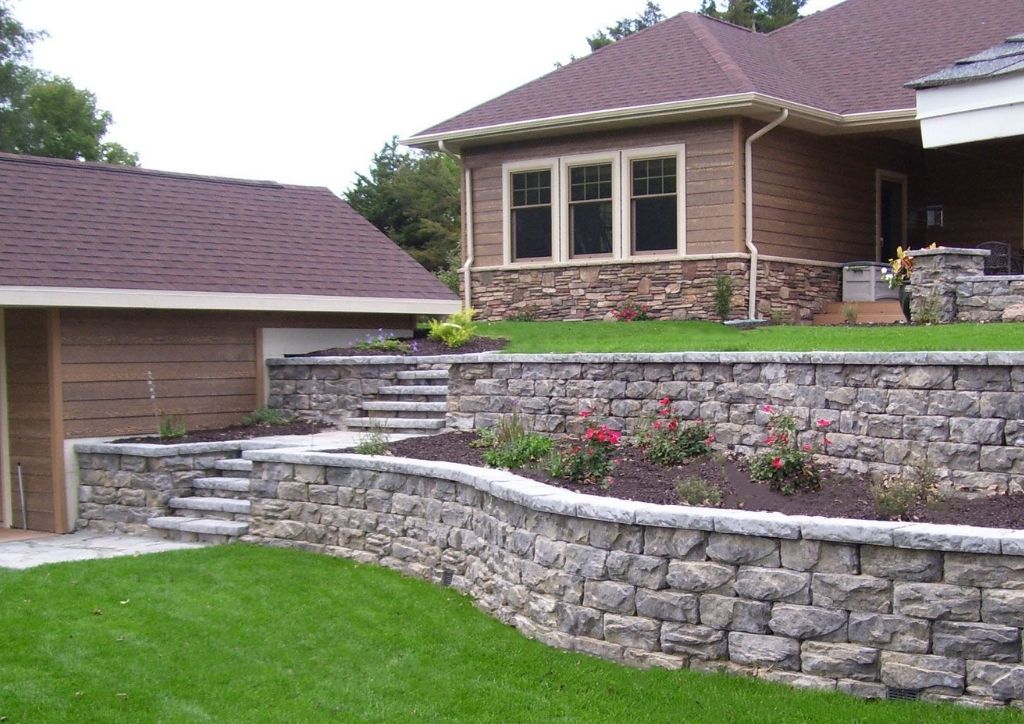Wall blocks that are retained have transcended their utilitarian ancestors, becoming the orchestrators of the canvas of outdoor space. They’ve evolved into versatile components that seamlessly combine functionality and aesthetics into an essential design element in modern landscapes. This exploration explores walls for retaining and their numerous advantages and how they can be utilized to change outdoor spaces.

Retaining wall block designs redefine traditional elements of hardscape with the possibility of a wide range of sizes, shapes, and colors. They provide the property owner with a canvas to express their personal concepts. The design possibilities are endless regardless of whether they’re constructed from the natural, elegant look of stone or concrete. Landscape architects and designers employ them to create captivating and cohesive outdoor spaces that are reflective of the uniqueness of the surrounding environment.
Under the Surface Allure: Guardians of Stability
Beyond their visual allure, retaining wall blocks unfold a plethora of functional benefits. As staunch guardians against erosion in soil, they take on the role of custodians, preserving the natural beauty of landscapes, and protecting areas from erosion-prone water runoff. They provide stability to areas of uneven or slope, transforming irregular landscapes into well-groomed sanctuaries suitable for tranquil outdoor living or flourishing gardens.
Wall blocks that are retained for the wall are a cost-effective and smart choice for property owners looking to improve their landscapes. The simple installation process and low maintenance requirements makes retaining wall blocks a cost effective solution. These blocks make impressive retaining walls. However, they also withstand the elements, and provide long-lasting durability without losing their visual appeal.
Versatile Sculptors: Defining Outdoor Living Areas
Retaining wall blocks are no longer just functional blocks for walls. They have evolved into sculptures which define outdoor living spaces. By integrating strategically with the surrounding landscape, property owners can to create distinct zones for a variety of activities like al-fresco eating, relaxing or gardening. These blocks can be used as an element of design, creating privacy barriers and accentuating landscape features, like sculpture gardens or water features.
They stack well and can support up three courses in height. Geo-grid reinforcement is necessary to support the soil beneath the blocks. They are able to support upto 3 courses of height. As walls rise in height, bigger configurations will be required to ensure durability and stability. With precision-designed interlocking systems the blocks create the foundation that is structurally solid to landscaping plans. Geo-grid reinforcements are incorporated to ensure long-term durability and toughness. They protect the retaining wall to resist soil pressures.
The Right Block for Your Ambiance
The choice of retaining walls requires a careful curation process by weighing factors such as the size, shape and color. in balance with the surrounding environment. The choice of retaining wall are influenced by the practical aspects such as height and retention. This carefully chosen choice enhances the overall design while ensuring an aesthetic and structural integrity.
Conclusion: A Symphony of Resilience
In conclusion, retaining walls blocks can transform the landscape and aid in sustainable and durable landscape practices. With their endless design possibilities as well as their ability to stabilize and protect and create living areas, these unassuming blocks transform into silent guardians in redefining outdoor spaces and weaving a tale of harmony and timelessness across the landscape. They are used for their aesthetic elegance or functional strength, retaining wall block craftsmen are shaping the harmony of nature’s magnificent outdoors.